Archeology in the middle east and the discovery of the Ark of the Covenant.
(by R.Tourniaire. Ups: English language not corrected)
Archeology in the middle east
Many have shown interest in history and culture throughout time. It wasn’t uncommon to re-capture the past also for the rulers of the ancient days.
However modern archeology as we know is agreed to have become popular during the English colonial empire.
Back then their backgrounds weren’t based on archeology studies and they often traveled with a friend or their wife. One of such was 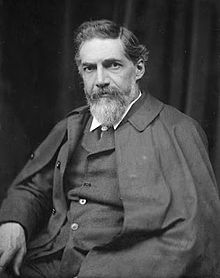 Sir William Flinders Petrie who spend a lot of time studying Egyptology. In 1896 he discovered a stele later called the ‘Victory Stele of Merneptah’ and has an inscription by King Merneptah. It’s claimed by many scholars to be the first documented instance of the name Israel. In this stele, Israel is described as a people which are interesting because Israel was originally a name for Jacob and his son’s tribe. The stele claims victory over these people and over what was most likely their grain storage. Taking from them their food supply would also bring them into famine and make them less a threat to others.
Sir William Flinders Petrie who spend a lot of time studying Egyptology. In 1896 he discovered a stele later called the ‘Victory Stele of Merneptah’ and has an inscription by King Merneptah. It’s claimed by many scholars to be the first documented instance of the name Israel. In this stele, Israel is described as a people which are interesting because Israel was originally a name for Jacob and his son’s tribe. The stele claims victory over these people and over what was most likely their grain storage. Taking from them their food supply would also bring them into famine and make them less a threat to others.
Before that, in August 1868, an Anglican missionary, Frederick Klein, had visited what is today Jordan where local bedouins showed him a stele from around 840 BCE. The stele was younger then the one found in Egypt and was by the King of Moab. It explains how they had been subjugated to Israel but then it’s claimed that the Moabite god delivered them and help them restore their land. Another interpretation of one of the lines in the stele shows that the ‘house of David’ is also mentioned. It also mentions the Israeli God. The 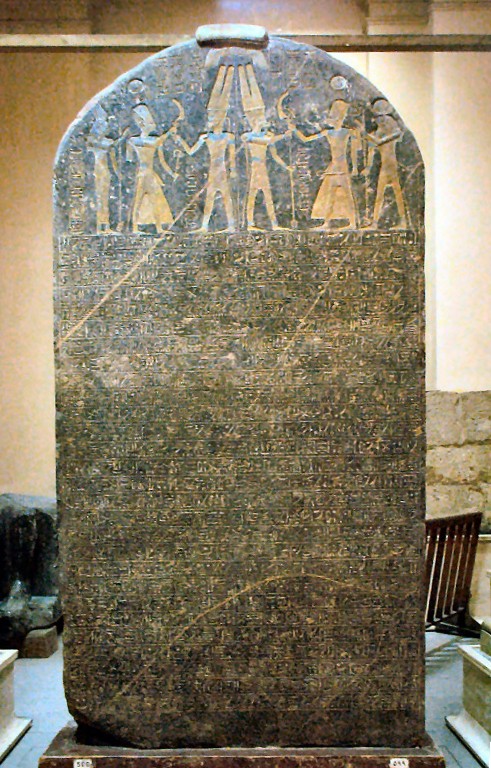 conflict between Moab and Israel is mentioned in the Bible.
conflict between Moab and Israel is mentioned in the Bible.
Later in the 1990s, another stele was found in northern Israel with an inscription in Aramaic. It’s thought to be from the 9th century BCE and a Syrian king boasting of having been victorious over Israel and being allied with the “house of David”. At this time, according to the Bible, Israel had divided in two and Judah became one kingdom and Israel another. Another stele mentioning Israel was an Assyrian stele. It was discovered in 1861 in Turkey. Although some scholars argue, many do think the mentioning of A-ha-ab-bu Sir-ila-a-a is about the king Ahab of Israel. The stele is about a war scene and is talking about things happening during the reigns of Ashurnasirpal II and Shalmaneser III.
As many English men started excavating and exploring lands in the Middle East they came to realize and recognize so much from Bible story. At this time the Bible was widely spread in countries such as England. They know of the nations, the stories, the battles, the names, but to many all of this was mere myths and legends rather real history. Because of Englands now fairly good relationship with the Ottoman empire they had the opportunity to explore places they hadn’t been much before. Archeology was becoming popular mostly because of its link to The Bible stories. Because of their belief in the Bible, the many pieces of evidence of places and people mentioned in the Bible were almost their own history.
This was a time when even Charles Darwin came with alternative explanations to the explanation of the earth’s origin that for long had been excepted to have happened the way the Bible tells us. In 1859 he published a book called the origin of species which has been considered by many to be the main-stream start of the rejection of the Biblical creation story. Ironically at the same time explores were discovering one evidence after the other of the Bible’s historical accuracy. It seems to be a divine inspiration behind to show the Bibles credibility at a time it was challenged more than ever.
Today it’s excepted historical facts and the existence of Babylon and other cities mentioned in the Bible is proven. But there was a time people even doubted Babylon ever existed. It was another English explorer, Claudius James Rich whom traveled to the Persian gulf disguised as a Mamluk and visited among other places Damascus. He later went to Baghdad around 1808 where he got to explore the remains of ancient Babylon. He later re-visited the site and wrote about it. There was later conducted a throughout excavation of the remains of Babylon by a German archeologist named Robert Johann Koldewey (1855-1925). He excavated the famous Hanging 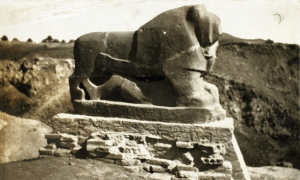 Gardens of Babylon and revealed both the foundation of a ziggurat and the Ishtar gate.
Gardens of Babylon and revealed both the foundation of a ziggurat and the Ishtar gate.
Since then many discoveries have been made confirming Bible history to be actual historical records. Many of the pharaohs  mentioned in the Bible have been found in ancient Egyptian inscriptions. Judah’s king Hizikiah is found on an ancient zeal. The Judean King Jehoiachin that was taken as a prisoner to Babylon, is found on a seal in Beth Shemesh. Tablets from Babylon speak of the jews being there just as the Bible explains. Names that for hundreds of years were historically connected only to the Bible and later confirmed by archeology are Artaxerxes (Ezra kap.4 and 5:7) , Osnappar (Assurbanipal) Ezra 4:10, Cyrus (Isa.45,1), Sennacherib (2.King.18,13), Salmanassar, (2.King 17,3), Merodach Baladan, (Isa.39,1), Nebukadnesar, (2. Kong 24, 1).
mentioned in the Bible have been found in ancient Egyptian inscriptions. Judah’s king Hizikiah is found on an ancient zeal. The Judean King Jehoiachin that was taken as a prisoner to Babylon, is found on a seal in Beth Shemesh. Tablets from Babylon speak of the jews being there just as the Bible explains. Names that for hundreds of years were historically connected only to the Bible and later confirmed by archeology are Artaxerxes (Ezra kap.4 and 5:7) , Osnappar (Assurbanipal) Ezra 4:10, Cyrus (Isa.45,1), Sennacherib (2.King.18,13), Salmanassar, (2.King 17,3), Merodach Baladan, (Isa.39,1), Nebukadnesar, (2. Kong 24, 1).
An old Hebrew tablet is found dated to the 9th century and matched the 2. Book of Kings story. It mentioned king Jehoash repairing 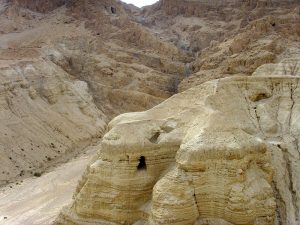 the temple in Jerusalem. After Israel was founded in 1948 the discoveries are multiplied. Many of the Biblical cities are re-discovered, there are too many to mention here. Among the discoveries is also the city of David.
the temple in Jerusalem. After Israel was founded in 1948 the discoveries are multiplied. Many of the Biblical cities are re-discovered, there are too many to mention here. Among the discoveries is also the city of David.
Many doubted for a long time that the Bible had remained un-corrupted for so long. Also, this was documented. A young shepherd boy named Muhammed edh-Dhib and his cousin Jum’a Muhammed and Khalil Musa was out close by the Dead Sea in November 1946. They made a major discovery of several scrolls – ancient copies of the Bible from the second temple period. After many more scrolls were discovered recording Jewish life in the region and the old testament books. They proved that the bible hadn’t changed in 2000 years! They are now displayed at the Museum in Jerusalem.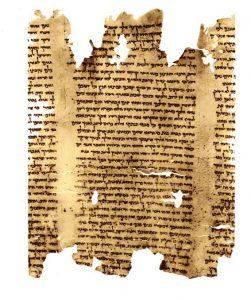
It’s ironic how the time period where the most proof of the Bibles truthfulness and accuracy was discovered was the same time atheism and evolution-theories grew rapidly.
It would seem that God was fighting against the false information flow against Him and the Bible by revealing one thing after the other. However, society was fast heading towards the rejection of both God and the Bible ignoring all the evidence and relying on new-found theories.
But perhaps the greatest evidence was yet to be discovered. The very item that proved there was a God and that He was the earth’s rightful owner. The question was, how would the world react to that?
THE FOUR EXPLORERES
In 1854 an American missionary, James Barclay was in Jerusalem where he had heard rumors that there was an underground cave 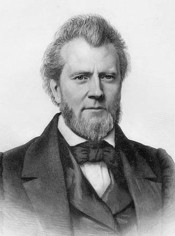 near the Damascus Gate. He went for a walk by the northern wall with his dog, and there the dog was the first one that found it’s way into the cave. He could see him disappearing and he could hear the barking from inside. An eager Barclay, along with his two sons, returned at night to explore the cave. They were stunned by the large underground quarry so long hidden. The great Ottoman Suleiman the Magnificent had wondered what to do with this huge cave that was extending under the city and was worried for the city’s safety. Therefore he sealed and hid it in 1540. So it had taken over 300 years before the cave was made know again.
near the Damascus Gate. He went for a walk by the northern wall with his dog, and there the dog was the first one that found it’s way into the cave. He could see him disappearing and he could hear the barking from inside. An eager Barclay, along with his two sons, returned at night to explore the cave. They were stunned by the large underground quarry so long hidden. The great Ottoman Suleiman the Magnificent had wondered what to do with this huge cave that was extending under the city and was worried for the city’s safety. Therefore he sealed and hid it in 1540. So it had taken over 300 years before the cave was made know again.
In 1873 a French archeologist named Charles Clermont-Ganneau followed in Barclay’s footsteps and went and explored the cave underneath the northern wall. He then discovered a carving of a cherub in a small niche in the cave. The cherubs appearance lead researchers to think this cave might have a history going all the way back to Solomon 
time and the first temple period. During Solomon’s era cherub carvings and statues was tied to the temple. And even the Ark had two cherubs on each side of it. This specific cherub carving also seemed similar to the Assyrian style that was popular also in Judea during the first temple period. This seemed to show the cave would have existed the time when the Ark disappeared.
Back in Europe. While the Ottomans for a long time was in conflict with European countries, things turned different as the political climate changed in the 19th century. An alliance between France, United Kingdom, Sardinia and the Ottoman Empire emerged as they fought Russia in the Crimean War also known as the Eastern War (1853-1856). This was also tied to Jerusalem where Christian rights in the Ottoman-controlled territory was discussed. Catholics and Orthodox Christians were in a dispute over holy places. Unlike the Catholic Church and the French revolutionaries, The Ottoman Empire had for a long time allowed diversity of faith and freedom of religion in their areas and many Christians had benefited from this during the late middle ages. But now the ottoman empire was weakening and relied on allies.
One of the men who fought on the side with the Ottomans in the Crimea battle was later Major-General Charles George Gordon who 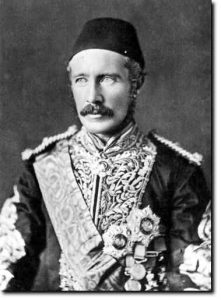 later received the Crimea Medal for his service in this war. His career also took him to China, Egypt and Sudan. But while he had time off he went to Palestine in 1882. Well aware of the Crucifixion site that the Orthodox and Catholics clung to, built over an ancient Roman temple for Aphrodite, his attention was drawn to mount a little north of the city wall that had a skull shape in its southern cliff. After some research, he was convinced this had to be the skull hill mentioned in the Bible, the real Golgotha where Christ was crucified. A tomb was located in the Garden in the mount later known as the Garden Tomb.
later received the Crimea Medal for his service in this war. His career also took him to China, Egypt and Sudan. But while he had time off he went to Palestine in 1882. Well aware of the Crucifixion site that the Orthodox and Catholics clung to, built over an ancient Roman temple for Aphrodite, his attention was drawn to mount a little north of the city wall that had a skull shape in its southern cliff. After some research, he was convinced this had to be the skull hill mentioned in the Bible, the real Golgotha where Christ was crucified. A tomb was located in the Garden in the mount later known as the Garden Tomb.
Gordon started excavating but King Leopold II gave him an unexpected assignment, but instead, he was sent to the Sudan conflict and in December 1883 they were withdrawing from Sudan. In 1884 he was killed in a battle in Khartoum.
But while he had been in Jerusalem something had happened to him that he didn’t explain. But he wrote in a letter to a friend a shocking statement: «Here at Skull Hill, close the Slaughter House of Jerusalem was Titus 1 to 2m. The Roman Eagle took the heart of Zion by throat, for close was the breach. Jeremiah wrote Lamentations in the cave. The Ark of the Covenant is there.” page 55. He also claimed the missing shew-bread was there: “Golgotha on Hill was Jeremiah’s Grotto. 1. This hill is outside gates near city where many roads pass. 2. From long time back the Slaughter House of City has been there. 3. It is N. of City. Shewbread table is in it.” (p.47)
He also said about the Ark: «I think it will be brought out again at the second coming, for it appears in Heaven vide Revins [or consult Revelation].»
Had Gordon received a revelation? He had started an excavation but never been able to finish so how would he know the Ark and the table of shewbread were there? His letters were stored away and forgotten.
While Gordon was in Jerusalem re-discovering the Golgotha hill, another colleague General Sir Charles Warren was sent to Sinai in 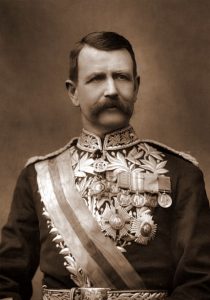 1882 to find out what had happened to Edward Henry Palmer’s expedition there. Edward had previously been engaged in the survey of Sinai and explored the desert by foot making friends amount the Bedouins. And so he had been sent back to use his influence over the Arabs of the El-Tih desert preventing the Arab sheiks from joining the Egyptian rebels and to secure the Suez Canal from interference. When Charles Warren came he found Palmer and his team murdered. Edward Henry Palmer had been interested in locating places tied to the story of the Israeli exodus from Egypt and even wrote a book on it called “Desert of the exodus – Journey on foot in the wilderness of the forty years wanderings”. However, Edward Palmer seemed to just go with the traditions from emperor Constantine days rather questioning them. It was clear that those picking out a mountain and calling in mount Sinai, rumored to be Constantin’s mother, hadn’t really studied their bible before doing so.
1882 to find out what had happened to Edward Henry Palmer’s expedition there. Edward had previously been engaged in the survey of Sinai and explored the desert by foot making friends amount the Bedouins. And so he had been sent back to use his influence over the Arabs of the El-Tih desert preventing the Arab sheiks from joining the Egyptian rebels and to secure the Suez Canal from interference. When Charles Warren came he found Palmer and his team murdered. Edward Henry Palmer had been interested in locating places tied to the story of the Israeli exodus from Egypt and even wrote a book on it called “Desert of the exodus – Journey on foot in the wilderness of the forty years wanderings”. However, Edward Palmer seemed to just go with the traditions from emperor Constantine days rather questioning them. It was clear that those picking out a mountain and calling in mount Sinai, rumored to be Constantin’s mother, hadn’t really studied their bible before doing so.
Charles Warren was saddened by his colleague’s destiny. Warren had earlier been recruited by the Palestine Exploration Fund to explore the Biblical land. He made several re-discoveries while in Jerusalem, he also conducted the first major excavations on the temple mount. Furthermore, he discovered an ancient water shaft that was later named Warren’s shaft and several tunnels underneath the temple mount. But in the end, his health forced him to return to England. One of His books, published in 1876 was called ‘Underground Jerusalem’.
The cave, the tunnels, the cherub, the mount of the Crucifixion, and the tomb did, in time, all become tourist attractions. So, these four men had re-discovered important sites that confirmed the history of Jerusalem. But had it really all been a part of the plan of the Creator, and were there still work yet to be done? Almost a hundred years were to pass as if God had paused the events that were happening. They were all so very close to the most sacred object on earth.
Ron Wyatt’s Excevations
Visiting Noah’s Ark site
Ronald Wyatt was born in 1933 in Ohio, United States. His family was Adventists and after some people had visited their home he was attracted to the peace they seemed to have and he was baptized at the age of 12.
Ron went to the Korean War when he was a young adult. He later married and had three children, Daniel, Michelle and Ronald Jr. When he was 27 years old he saw something in Life Magazine that caught his attention. It was about a formation in the Eastern Anatolia, close by mount Ararat that had a boat-shaped form. They were wondering if it could be the remains of Noah’s ark. He never forgot about it. Ron had a great passion for the Bible and he so wanted to show people that the book was an authentic book. He used a lot of time studying biblical archeology and other discoveries related to the Bible made by different explorers. But none of these documented the miracle stories or any of the stories talking about God’s special interference with mankind. He thought that especially Noah’s ark could prove that the Genesis account of the Creation and the flood was accurate. He could not rest until he had gone to see the boat-shaped object. Many years later he booked a ticket to Turkey not knowing where to look for it, all he knew was what area it was in. After booking his flight his two sons, the youngest only 16, asked to come with him. Ron prayed that if he were to bring them on this trip, God would have to help them so that their passport would come back in time for the flight. This would be the sign to bring them with him. First only one of the son’s passport arrived, but then finally also the other. They took a flight to Istanbul and then continued their journey to Ezurum
something in Life Magazine that caught his attention. It was about a formation in the Eastern Anatolia, close by mount Ararat that had a boat-shaped form. They were wondering if it could be the remains of Noah’s ark. He never forgot about it. Ron had a great passion for the Bible and he so wanted to show people that the book was an authentic book. He used a lot of time studying biblical archeology and other discoveries related to the Bible made by different explorers. But none of these documented the miracle stories or any of the stories talking about God’s special interference with mankind. He thought that especially Noah’s ark could prove that the Genesis account of the Creation and the flood was accurate. He could not rest until he had gone to see the boat-shaped object. Many years later he booked a ticket to Turkey not knowing where to look for it, all he knew was what area it was in. After booking his flight his two sons, the youngest only 16, asked to come with him. Ron prayed that if he were to bring them on this trip, God would have to help them so that their passport would come back in time for the flight. This would be the sign to bring them with him. First only one of the son’s passport arrived, but then finally also the other. They took a flight to Istanbul and then continued their journey to Ezurum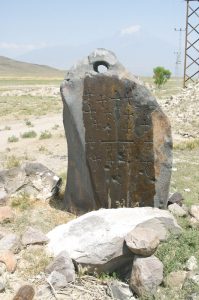 and then Dogubayazit, a small town close by Mount Ararat. When taking a cab at night towards Dogubaysit, Ron reach out to God to help him. He knew he would not know where to go and find the formation and so he asked God for a sign. He prayed that if they were driving close to the site God would cause the cab to stop so that Ron could leave some mark. Then the car choked and Ron went out and placed some rocks at the site so they could find the place again at daytime. The driver got the car going again but then the car stopped again and Ron now worried that it was all a coincidence. Still, he decides to stock up another pile of rocks at this place. Then it happens again and Ron does the same thing. When going back at daytime to look at these three places, they first found several huge stones in the small village of Kazan. The stones were shaped like anchor stones but there wasn’t any water nearby that was big enough for large ships. These stones could only have belonged to a very large ship. He noticed how old they looked and that one of them had eight crosses on them. Could these anchor stones have belonged to Noah’s ark? The next place he had marked with piles of rock he found an old alter-stone and the remains of an ancient stone house and some graves. On one of the graves, there was a
and then Dogubayazit, a small town close by Mount Ararat. When taking a cab at night towards Dogubaysit, Ron reach out to God to help him. He knew he would not know where to go and find the formation and so he asked God for a sign. He prayed that if they were driving close to the site God would cause the cab to stop so that Ron could leave some mark. Then the car choked and Ron went out and placed some rocks at the site so they could find the place again at daytime. The driver got the car going again but then the car stopped again and Ron now worried that it was all a coincidence. Still, he decides to stock up another pile of rocks at this place. Then it happens again and Ron does the same thing. When going back at daytime to look at these three places, they first found several huge stones in the small village of Kazan. The stones were shaped like anchor stones but there wasn’t any water nearby that was big enough for large ships. These stones could only have belonged to a very large ship. He noticed how old they looked and that one of them had eight crosses on them. Could these anchor stones have belonged to Noah’s ark? The next place he had marked with piles of rock he found an old alter-stone and the remains of an ancient stone house and some graves. On one of the graves, there was a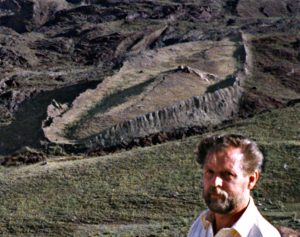 gravestone with eight people carved on the rock where one of them was depicted with the eyes closed. Again, Ron linked it to the story of Noah, thinking this could be graves connected to Noah and his family. When they went to find the third pile of rocks they had placed on the side of the road, they found the large formation he once saw in Life Magazine and that he had come to see. This special help from heaven had Ron convinced this had to be a special place. Other researchers had been there before but unable to excavate properly they determined it was most likely a natural formation accidentally looking like a boat. Ron, however, was convinced he was looking at the remains of Noah’s Ark. Unable to do proper research as he had no tools, proper knowledge or permit at the time, he went back home.
gravestone with eight people carved on the rock where one of them was depicted with the eyes closed. Again, Ron linked it to the story of Noah, thinking this could be graves connected to Noah and his family. When they went to find the third pile of rocks they had placed on the side of the road, they found the large formation he once saw in Life Magazine and that he had come to see. This special help from heaven had Ron convinced this had to be a special place. Other researchers had been there before but unable to excavate properly they determined it was most likely a natural formation accidentally looking like a boat. Ron, however, was convinced he was looking at the remains of Noah’s Ark. Unable to do proper research as he had no tools, proper knowledge or permit at the time, he went back home.
Trip to Israel following year
He continues his study and is very interested in the location of Sinai and the crossing of the Red Sea. He couldn’t make the routes drawn on the maps  make sense. He started considering that perhaps Sinai wasn’t at the Sinai peninsula (The peninsula was named after the mountain that had been suggested to be Mount Sinai at the beginning of the Roman Christian era) but somewhere else. He looked at maps and read a book by the Adventist prophet Ellen White describing the Israeli journey and he could find only one place to match the Biblical description as well as hers. It was located at what is today known as the Red Sea and not at the Gulf of Suez that more often is claimed to have been the crossing site. The site Ron found by the Red Sea had a beach large enough to hold the great number of people that camped there and it was blocked by mountains south making them easily trapped just like the Bible say they were. A road between the mountains would make them enclosed until they
make sense. He started considering that perhaps Sinai wasn’t at the Sinai peninsula (The peninsula was named after the mountain that had been suggested to be Mount Sinai at the beginning of the Roman Christian era) but somewhere else. He looked at maps and read a book by the Adventist prophet Ellen White describing the Israeli journey and he could find only one place to match the Biblical description as well as hers. It was located at what is today known as the Red Sea and not at the Gulf of Suez that more often is claimed to have been the crossing site. The site Ron found by the Red Sea had a beach large enough to hold the great number of people that camped there and it was blocked by mountains south making them easily trapped just like the Bible say they were. A road between the mountains would make them enclosed until they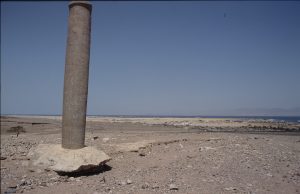 reached this beach and an ancient Egyptian post north would have made impossible to head in that direction as well. With the army approaching behind them they would have had nowhere to go which would explain their desperation. Exactly a year after his trip to the Noah’s ark shaped object in Turkey, he went to eastern Sinai which at this time was under Israeli control. He brings both his sons this time as well and they start diving into an area of the Red sea by this beach hoping to see something that could suggest it was the right site. They found three Egyptian chariot wheels at the bottom of the sea. They were rotten but the gold was still intact and perfectly shaped like an ancient wheel. Without proper equipment are unable to continue further into the deep to look for more similar items. While looking around at the area they also locate an ancient pillar laying in the water with its inscription eroded off. While diving Ron gets severally sunburnt and they have to abort their research and head back to Jerusalem. He reports the finding of the column to someone with authority and it was later taken out of the water and erected at the plain by the Israelis and it stands there to this day. Ron had told that he thought it might have been a pillar marking the place they crossed the Red Sea.
reached this beach and an ancient Egyptian post north would have made impossible to head in that direction as well. With the army approaching behind them they would have had nowhere to go which would explain their desperation. Exactly a year after his trip to the Noah’s ark shaped object in Turkey, he went to eastern Sinai which at this time was under Israeli control. He brings both his sons this time as well and they start diving into an area of the Red sea by this beach hoping to see something that could suggest it was the right site. They found three Egyptian chariot wheels at the bottom of the sea. They were rotten but the gold was still intact and perfectly shaped like an ancient wheel. Without proper equipment are unable to continue further into the deep to look for more similar items. While looking around at the area they also locate an ancient pillar laying in the water with its inscription eroded off. While diving Ron gets severally sunburnt and they have to abort their research and head back to Jerusalem. He reports the finding of the column to someone with authority and it was later taken out of the water and erected at the plain by the Israelis and it stands there to this day. Ron had told that he thought it might have been a pillar marking the place they crossed the Red Sea.
While walking by Gordan’s Golgatha and the cliff-face together with a man of influence Ron Wyatt’s hand suddenly moved up and pointed to a part of the cliff-face and he said: “There is Jeremiah’s grotto and the Ark of The Covenant is in there.” The man he was with was excited and promise to get Ron the needed permits to excavate. However, Ron himself was shocked by the event as he had never thought of looking for the ark and because he had felt as if someone had lifted up his arm and said the words through him. The experience was for him supernatural and he went home to pray about it and research if there was even a possibility the Ark could be there and what had happened to it. Did God want him to excavate for the Ark? He hadn’t even had a chance to excavate on Noah’s ark yet or to continue his other projects when this event happened. The other two experiences in Turkey and at the Red Sea strengthen the faith that God was leading Him, and without it, he would perhaps never had started excavating for the Ark. It was the experiences combined that gave him the bravery and that made him take his experience seriously.
Ron was also very interested in how the pyramids were built. When visiting the museum in Cairo he noticed some wooden structures that no one seemed to know exactly what was. This gave an idea of how they might have lifted the large rocks. When at home he made an example of how they could have been used and later that fall he displays his pyramid-building machine model at an international trade fair in Nashville Tennessee. Returning to Egypt he gives Nassef Hassan, the director of Antiquities in Giza, diagrams of the machines.
He also hadn’t forgotten about the Noah’s Ark formation. He didn’t know how he could excavate it the way it was deep into the  ground and kept praying for God til lift the formation up by an earthquake. He then hears of an earthquake hitting the region in December 1978, but he didn’t know if it was an answer to prayer or an ordinary earthquake. When he later visited the following year he found to his amazement that the formation alone had been lifted several meters up separating itself from the mudflow around it. According to the locals it had been a special earthquake. Several had seen a special gray light in the sky and gone out to look at it when the earthquake stroke and none had gotten hurt. Ron became even more confident that it wasn’t him who was asking God for help, but that it was God Himself who wanted Him to continue this work. It was God who had lifted up his arm in the Garden, not his own cleverness.
ground and kept praying for God til lift the formation up by an earthquake. He then hears of an earthquake hitting the region in December 1978, but he didn’t know if it was an answer to prayer or an ordinary earthquake. When he later visited the following year he found to his amazement that the formation alone had been lifted several meters up separating itself from the mudflow around it. According to the locals it had been a special earthquake. Several had seen a special gray light in the sky and gone out to look at it when the earthquake stroke and none had gotten hurt. Ron became even more confident that it wasn’t him who was asking God for help, but that it was God Himself who wanted Him to continue this work. It was God who had lifted up his arm in the Garden, not his own cleverness.
In Januar 1979 Ron started excavating at the site he had pointed to as the place for Jeremiah’s grotto and the Ark of the Covenant. It was located within a garden run by an English foundation. He told them he would help improve the site and promised that he would tidy after himself when he was excavating. Ron worked together with his two sons.
The site had a large rock that prevented them from continuing digging downward and so Ron chose to dig a few feet to the right of 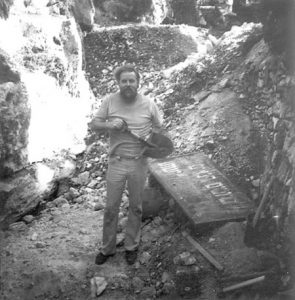 where he had pointed. As they dig downward they notice three niches in the cliff face. Ron started thinking of the crucifixions that might have taken place here if General Gordan had been correct when locating Skull hill. Could the Romans have used these niches to write down the crimes of the crucified? He got the idea to write “Jesus, King of Jews” in three different languages and placed them in the niches. Worried that the ground under their feet was loose and unsafe they had another look at the site he originally had pointed to. They noticed the cliff went inward and that there was enough space between the rock and cliff to dig downward. The cliff formed a natural roof over their heads as they dug straight down. They first found something that appeared to be a rope hole in the cliff face and after a few meters, they found themselves in a round plastered cistern-looking structure. In the same area while digging downward they located many small round rocks and finger bones. He was horrified by it as he remembered reading of Stephens stoning. Stoning was an execution method used at the
where he had pointed. As they dig downward they notice three niches in the cliff face. Ron started thinking of the crucifixions that might have taken place here if General Gordan had been correct when locating Skull hill. Could the Romans have used these niches to write down the crimes of the crucified? He got the idea to write “Jesus, King of Jews” in three different languages and placed them in the niches. Worried that the ground under their feet was loose and unsafe they had another look at the site he originally had pointed to. They noticed the cliff went inward and that there was enough space between the rock and cliff to dig downward. The cliff formed a natural roof over their heads as they dug straight down. They first found something that appeared to be a rope hole in the cliff face and after a few meters, they found themselves in a round plastered cistern-looking structure. In the same area while digging downward they located many small round rocks and finger bones. He was horrified by it as he remembered reading of Stephens stoning. Stoning was an execution method used at the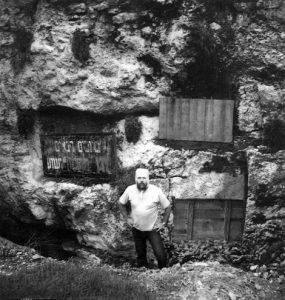 same time as crucifixions were practiced. He thought this might be such a place. He continued his tunnel now along with the cliff-face underneath the place he had found the niches. He was looking for the Ark of The Covenant as so he was trying to find a way into the cliff-face or to an underground cave of some sort. He dug a hole over the cistern-looking structure only to find himself in a new area with another circular structure. These remains looked more like the remains of a building. He found several Roman coins and pottery. On the cliff face, he saw a stone standing straight out of the cliff-face with a brick construction underneath. A few feet from it he noticed a square-shaped rock sitting on the ground. He lifted it up and found a square hole underneath with the depth of half a meter. Continuing to remove rubble from around the hole he found it to have an earthquake crack extending from it and down into the solid rock. Inside he had a deep conviction this might have been the cross-hole holding Christ cross. According to Matthew 27, there was an earthquake when Christ died and it said “the rocks rent” at the site. Continuing excavating he found several other square holes that he thought could hold crosses. He was certainly convinced this had to be the place of execution in Roman times and that perhaps the construction around could be an old memorial built to remember Christ sacrifice here. Ron has to leave the excavation site for now and go home and so they covered up their entrance to the site.
same time as crucifixions were practiced. He thought this might be such a place. He continued his tunnel now along with the cliff-face underneath the place he had found the niches. He was looking for the Ark of The Covenant as so he was trying to find a way into the cliff-face or to an underground cave of some sort. He dug a hole over the cistern-looking structure only to find himself in a new area with another circular structure. These remains looked more like the remains of a building. He found several Roman coins and pottery. On the cliff face, he saw a stone standing straight out of the cliff-face with a brick construction underneath. A few feet from it he noticed a square-shaped rock sitting on the ground. He lifted it up and found a square hole underneath with the depth of half a meter. Continuing to remove rubble from around the hole he found it to have an earthquake crack extending from it and down into the solid rock. Inside he had a deep conviction this might have been the cross-hole holding Christ cross. According to Matthew 27, there was an earthquake when Christ died and it said “the rocks rent” at the site. Continuing excavating he found several other square holes that he thought could hold crosses. He was certainly convinced this had to be the place of execution in Roman times and that perhaps the construction around could be an old memorial built to remember Christ sacrifice here. Ron has to leave the excavation site for now and go home and so they covered up their entrance to the site.
In the spring same year, only a few months later, Ron and his children went to Cairo to demonstrate the building machines on 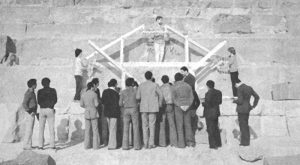 Chephren’s pyramid proving the diagrams Ron had made to actually be able to easily lift the stones that were used to build the pyramids. Ron ended up on both TV and Radio. In the summer he continued to the Noah’s ark site. Ron’s schedule is now very busy and he has started to co-operate with other scholars. But not everyone shares his enthusiasm. Several tests are done at the Noah’s ark site that convinced Ron even further that it was not a natural formation.
Chephren’s pyramid proving the diagrams Ron had made to actually be able to easily lift the stones that were used to build the pyramids. Ron ended up on both TV and Radio. In the summer he continued to the Noah’s ark site. Ron’s schedule is now very busy and he has started to co-operate with other scholars. But not everyone shares his enthusiasm. Several tests are done at the Noah’s ark site that convinced Ron even further that it was not a natural formation.
He then continued to excavate at the Ark of The Covenant site in the winter of 1979, exploring the many cracks and openings there without any results.
In 1980 he published his first book on the Noahs ark find explaining what he had found and why he believed it was, in fact, Noah’s 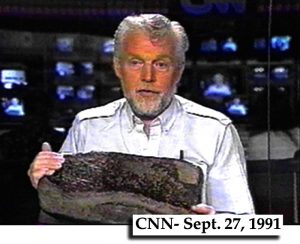 ark. He then went back and continued the excavation by the crucifixion site, however, the work seems to be standing still. Not knowing what to do Ron, on the advice of his son, started praying where to go next. He was impressed to break through the wall in front of the cross hole and after some work managed to open up a small hole proving to them that there was a cave inside. He had hoped it was the very cave containing the Ark of the Covenant. How amazing if it stood right by where Christ died! After opening enough to go in he was disappointed to discover there was no ark there, only small cracks and new openings into even larger caves and shafts.
ark. He then went back and continued the excavation by the crucifixion site, however, the work seems to be standing still. Not knowing what to do Ron, on the advice of his son, started praying where to go next. He was impressed to break through the wall in front of the cross hole and after some work managed to open up a small hole proving to them that there was a cave inside. He had hoped it was the very cave containing the Ark of the Covenant. How amazing if it stood right by where Christ died! After opening enough to go in he was disappointed to discover there was no ark there, only small cracks and new openings into even larger caves and shafts.
During in 1979 and 1980 Ron engaged in different archeological research several places.
1981 passed without Ron discovering any Ark and he was starting to get discouraged with the whole excavation. It was now December 1981 to January 1982 and even Rons sons were tired and feeling both sick and homesick. First one of his sons leave and then the other. However, Ron still had a few helpers. One of them was very thin and could enter smaller areas then Ron was able to, and this proved to be a good help in eliminating caves. But Ron had himself gotten ill and suffered from pneumonia. He was also broke. He was staying at the Adventist study center only a little north of the excavation site but was now unable to pay for his expenses. He didn’t even have money for food. He was feeling humiliated and alone in the work. Had not God wanted him to do this after all?
While in the cave-system he found a small corridor that he pushed himself through. It was so tight that he could hardly breathe, but he continued. On the end of it, he noticed a stalactite standing out of the cave wall and broke it off only to find an opening behind. He used his flashlight and could see a cave of some sort, however, he didn’t find it very promising at first look. It seemed too small from where he was standing. But he was leaving no stone unturned and use a chisel to open up a hole large enough for his thin friend to squeeze himself inside. Not many minutes passed before the young man are squeezed himself back out and with complete terror and panic in his eyes he screamed: “what is in there, what is in there”? The man refuses to return and hurries out of the cave system.  Now Ron got his hope back, could it be? He had to continue to enlarge the hole in order to fit himself through. And as soon as it looked large enough he squeezed himself through it. He had to sit down as he entered. there was very little room up to the ceiling. He then noticed that he was sitting on many large rocks and that the bottom of the cave was further underneath. He started shining his flashlight downward and noticed some rotten animal skin and wooden boards underneath the rocks. The flashlight spotted something shining, something looking like gold. His heart jumped, he thought it might be the Ark of the Covenant. But after removing some rocks he could see that it was a table resembling in appearance and size to the altar of shewbread. He knew now he was close. This was another one of the missing objects from the temple. So he started exploring the cave with his flashlight. The cave narrowed into a corner. While looking at the natural wall he could see something that looked like a stone box with it’s lid up right into the ceiling. He went closer to the box and notice its lid was cracked in two and pushed a little to the side. But he could not see down into it for it was that close to the ceiling. When taking a closer look at the ceiling right above the cracked lid he could see it too had a crack or opening and he saw some dark brownish material on the ceiling and on the lid right where it was cracked open. He suddenly realized what he was looking at.
Now Ron got his hope back, could it be? He had to continue to enlarge the hole in order to fit himself through. And as soon as it looked large enough he squeezed himself through it. He had to sit down as he entered. there was very little room up to the ceiling. He then noticed that he was sitting on many large rocks and that the bottom of the cave was further underneath. He started shining his flashlight downward and noticed some rotten animal skin and wooden boards underneath the rocks. The flashlight spotted something shining, something looking like gold. His heart jumped, he thought it might be the Ark of the Covenant. But after removing some rocks he could see that it was a table resembling in appearance and size to the altar of shewbread. He knew now he was close. This was another one of the missing objects from the temple. So he started exploring the cave with his flashlight. The cave narrowed into a corner. While looking at the natural wall he could see something that looked like a stone box with it’s lid up right into the ceiling. He went closer to the box and notice its lid was cracked in two and pushed a little to the side. But he could not see down into it for it was that close to the ceiling. When taking a closer look at the ceiling right above the cracked lid he could see it too had a crack or opening and he saw some dark brownish material on the ceiling and on the lid right where it was cracked open. He suddenly realized what he was looking at.
It was at this time, as Ron recalled, the instant realization of what had happened here dawned on him and he passed out. When he  realized that the crack in the ceiling was the end of the crack he had found in the elevated cross-hole many feet above him, and the black substance was blood which had fallen through the crack and into the stone case, he knew the Ark was in the stone case. But the most overwhelming realization was that Christ’s Blood had actually fallen onto the Mercy Seat. Later he came back and managed to confirm that it really was the Ark of the Covenant.
realized that the crack in the ceiling was the end of the crack he had found in the elevated cross-hole many feet above him, and the black substance was blood which had fallen through the crack and into the stone case, he knew the Ark was in the stone case. But the most overwhelming realization was that Christ’s Blood had actually fallen onto the Mercy Seat. Later he came back and managed to confirm that it really was the Ark of the Covenant.
Ron reported his findings to the Israeli government but was asked to keep silent. Ron couldn’t remain silent long and he started to share the discovery with anyone who wanted to listen. Sometimes just one person, other times large rooms with hundreds of people. He started printing paper and sending it out to anyone wanting to hear. However, the majority of the Christians were a skeptic to his claim. Wasn’t it too incredible? And why would God use this man? And why didn’t he show any photos of the Ark if had really found it?
After several visits to the chamber, Ronald found that it contained many items from the first temple.
the Ark of the Covenant in the Stone case; the Table of Shew-bread; the Golden Altar of Incense that was in front of the veil; the Golden Censer; the 7-branched Candlestick holder, (which didn’t have candles but had tiny, bow-like golden oil lamps which are built into the tips of the candlestick); a very large sword; an Ephod; a Miter with an ivory pomegranate on the tip; a brass shekel weight; numerous oil lamps; and a brass ring which appeared to be for hanging a curtain or something similar. On the back of the Ark is a small open cubicle which still contains the “Book of the Law” and is presumably the one Moses, himself, wrote. To the best of his knowledge, the Book of Genesis was not there- only Exodus, Numbers, Leviticus and Deuteronomy. The thing that amazed Ron was that these Scrolls, written on animal skins, were still in perfect condition.
But he quickly realized that there was no way the Ark had been taken into the chamber where he had entered. It had just been a small hole he enlarged enough to get himself in. After removing some of the stones at the southern wall of the cave he found a larger entrance going south towards Zedekiah’s’ cave which was situated on the other side of the road outside. The entrance was blocked with rocks. Several years later He was able to walk the tunnel to Zedekiah’s grotto, one of the tunnels going in this direction ended close by where the cherubim were found.
Ron Wyatt had a Jewish laboratory in Israel analyze some of the blood found at the earthquake crack. The result shocked them beyond. The blood cells were still alive. And it contained only 23 chromosomes from the mother side and only a Y chromosome added. The one the blood belonged to, did not have an earthly father. Again Ron believed it was confirmed that this was the blood of Christ. And if the blood went on the mercy seat it had proven that it was our sins against God’s law Christ took the penalty for, but also that God really had sent His son to die in our place. Ron wanted to show everything to the world right away but God stopped him.
On one of his trips, he felt the presence of angels in the room before noticing four angels standing by the ark. They told him they were assigned to protect the ark. They then ask Ron to set up his camera and film the Ark as the angels opened up the lid and lifted out the ten commandments of stone out and handed them to Ron. Then they took them from his hands and placed them in a niche in the wall close by the Ark, south of it. They then told Ron Wyatt exactly when God had planned to show this discovery to the world. «that when the Sunday law was in force, that shortly after that, was when this would take place. ». Ron knew instantly what the angels meant as he had studied the topic beforehand and learned of it since he was a little boy. (Ref. see video below to see Ron saying what the angels said) The angels were talking about the enforcement of the Mark of The Beast that is mentioned in Revelation 14 as the last deception and test coming upon the world before Christ second coming.
Ron had found the most desired object of all times, regarded as Jewish by many, the item that once stood in the temple as a throne for God Himself.
How would the nations, the Jews, Muslims, roman and orthodox Christians and Protestants all react to this discovery, and would it create a loud cry going from Jerusalem to the whole world?
__________________________
Reference video:

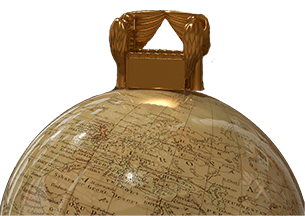
Recent Comments